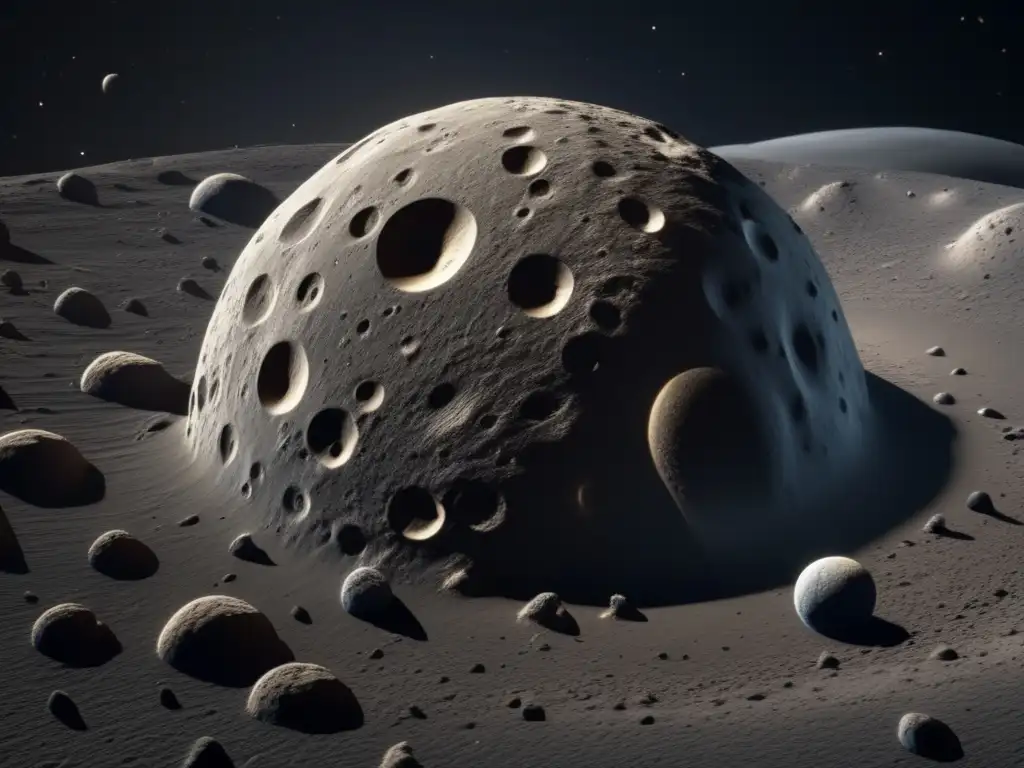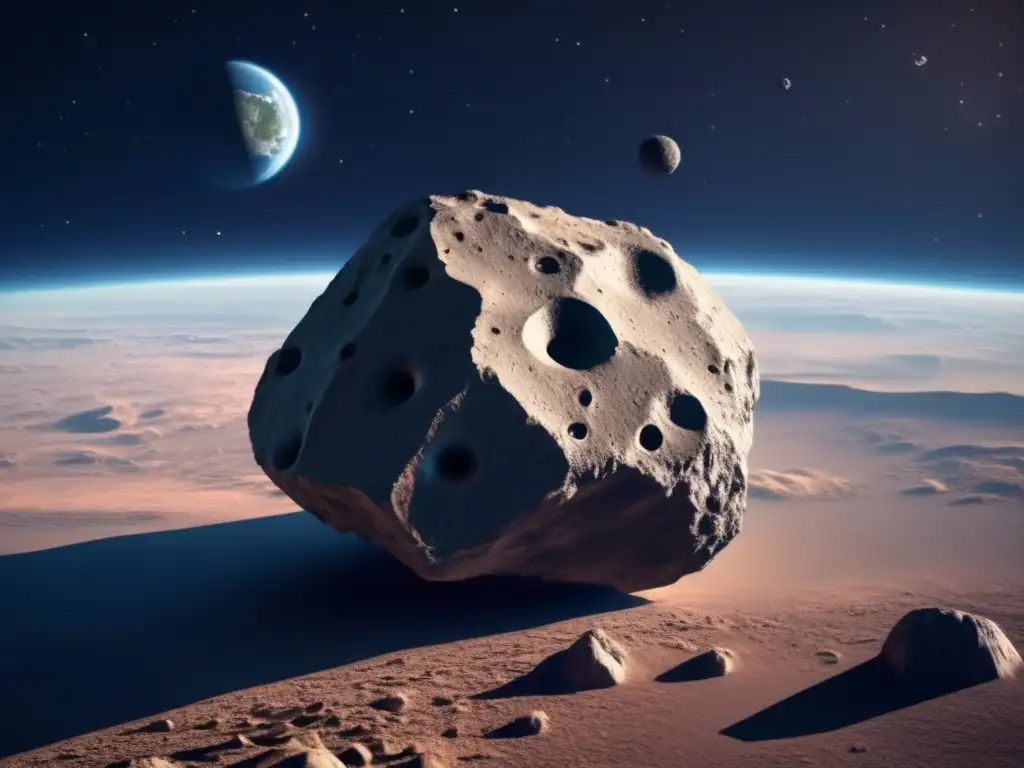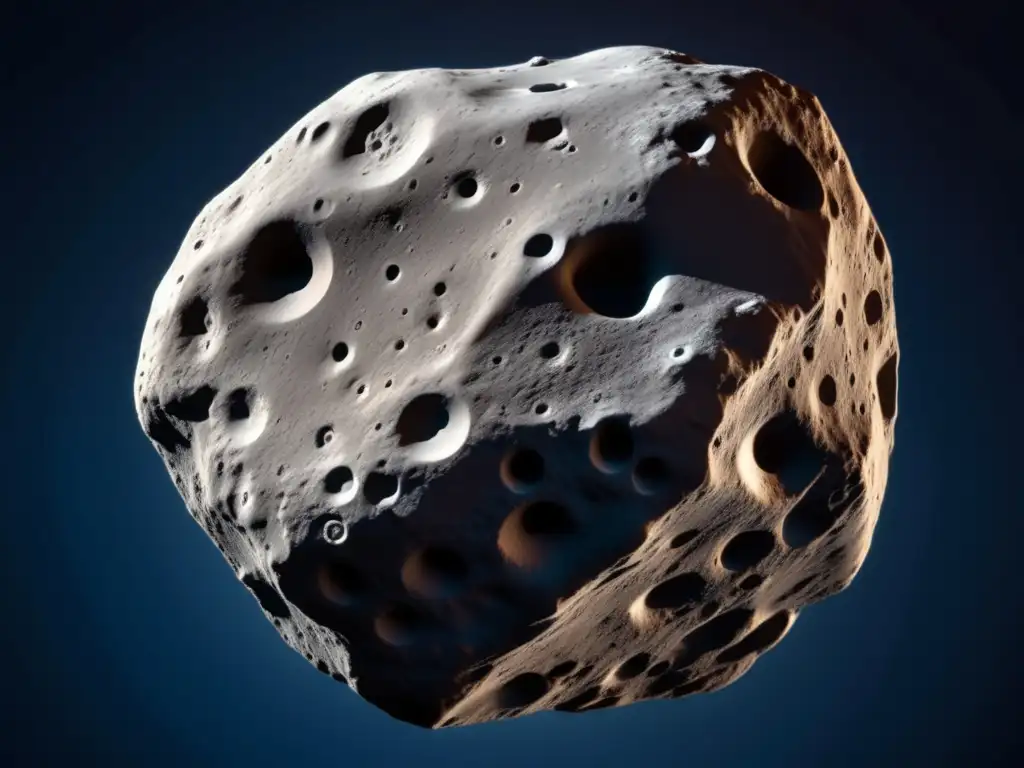Asteroid Lycaon: A Detailed Look

Introduction
Welcome to Asteroid Realm, where we explore the fascinating world of asteroids. In this article, we will take a detailed look at Asteroid Lycaon, delving into its characteristics, history, and significance in the study of asteroids.
Lycaon's Orbit and Composition

Orbit and Size
Asteroid Lycaon belongs to the Apollo group and has an eccentric orbit that crosses Earth's path. It was discovered on January 14, 2009, by the Catalina Sky Survey. With a diameter of around 1 kilometer, Lycaon is considered a potentially hazardous asteroid due to its close encounters with our planet.
Physical Characteristics
Lycaon's surface is composed primarily of rocky materials, including silicates and metals. Spectroscopic analysis suggests the presence of organic compounds as well. Its reflectivity, or albedo, is relatively low, indicating a dark surface. Scientists believe that Lycaon might have undergone significant changes due to its close approaches to Earth and gravitational interactions with other celestial objects.
Rotation and Shape
Studies have revealed that Lycaon spins rapidly on its axis, completing a full rotation in just under four hours. This fast rotation could lead to variations in temperature and surface features. Although Lycaon's shape has not been precisely determined, its rapid rotation suggests a non-spherical form.
Lycaon's Historical Significance

Mythological Connections
Lycaon derives its name from the Greek mythological figure, King Lycaon. According to ancient Greek folklore, King Lycaon had angered Zeus and was transformed into a wolf as punishment. The connection between the asteroid and the mythological story adds a layer of intrigue and symbolism to its study.
Astronomical Observations and Discoveries
Lycaon's discovery and subsequent observations have provided valuable insights into the behavior and path of potentially hazardous asteroids. Studying its orbit and composition aids in understanding the potential risks and impact hazard associated with near-Earth asteroids. Additionally, Lycaon serves as a case study for celestial mechanics, enhancing our comprehension of gravitational interactions and orbital dynamics.
Lycaon's Implications and Current Research

Mitigation Strategies
Given Lycaon's designation as a potentially hazardous asteroid, understanding its composition and trajectory is crucial for developing effective mitigation strategies. Scientists are working on methods to divert or destroy such asteroids if they pose a threat to Earth. The study of Lycaon contributes to these ongoing efforts and broadens our knowledge of planetary defense.
Future Missions
Lycaon's characteristics make it an intriguing target for future space missions. Detailed exploration and sample return missions could provide invaluable information about its geological history, surface morphology, and potential resources. Such missions offer exciting opportunities to expand our understanding of asteroids and their significance in planetary science.
Frequently Asked Questions

-
Q: Can Asteroid Lycaon collide with Earth?
A: While Lycaon has a close orbit that crosses Earth's path, current calculations indicate no potential impact for the foreseeable future.
-
Q: How does Lycaon compare to other potentially hazardous asteroids?
A: Lycaon is relatively small compared to some other potentially hazardous asteroids. However, its proximity to Earth and potential impact risk require close monitoring.
-
Q: Has any previous mission explored Asteroid Lycaon?
A: As of now, no dedicated mission has been launched to explore Lycaon. However, future missions are being considered to study this intriguing asteroid in detail.
-
Q: What are the key features that make Lycaon interesting for scientists?
A: Lycaon's rapid rotation, potential hazard classification, and its mythological connections are among the key aspects that attract scientific interest.
-
Q: How can I contribute to asteroid research?
A: You can participate by supporting space agencies, research institutions, and organizations focused on asteroid research. Additionally, staying informed and spreading awareness about the importance of studying asteroids can make a difference.
Conclusion
Asteroid Lycaon presents an intriguing subject for astronomers and researchers alike. Its orbit, composition, and historical significance contribute to our understanding of asteroids and their potential impact on our planet. Continued observations and future missions will undoubtedly unearth new insights, ultimately enhancing our knowledge of these celestial objects. As we unravel the mysteries of Lycaon and other asteroids, let us embrace the wonders of the cosmos and strive to protect our world.
Thank you for joining us in this detailed exploration of Asteroid Lycaon. We encourage you to share your thoughts and further engage with the Asteroid Realm community. Don't forget to subscribe, share this article on social networks, and explore more exciting content at www.asteroidrealm.com.
Additional Resources

For those interested in delving deeper into the world of asteroids, here are some additional resources:
- NASA's Asteroid Redirect Mission
- International Astronomical Union's Asteroid Database
- European Space Agency's Asteroid Impact Mission
 Deciphering The History Of Asteroid Telemachus
Deciphering The History Of Asteroid Telemachus The Enigmatic Qualities Of Asteroid Dolon
The Enigmatic Qualities Of Asteroid Dolon Exploring The Nature Of Asteroid Rhesus
Exploring The Nature Of Asteroid RhesusIf you want to discover more articles similar to Asteroid Lycaon: A Detailed Look, you can visit the Asteroid Profiles category.
Leave a Reply

Articulos relacionados: